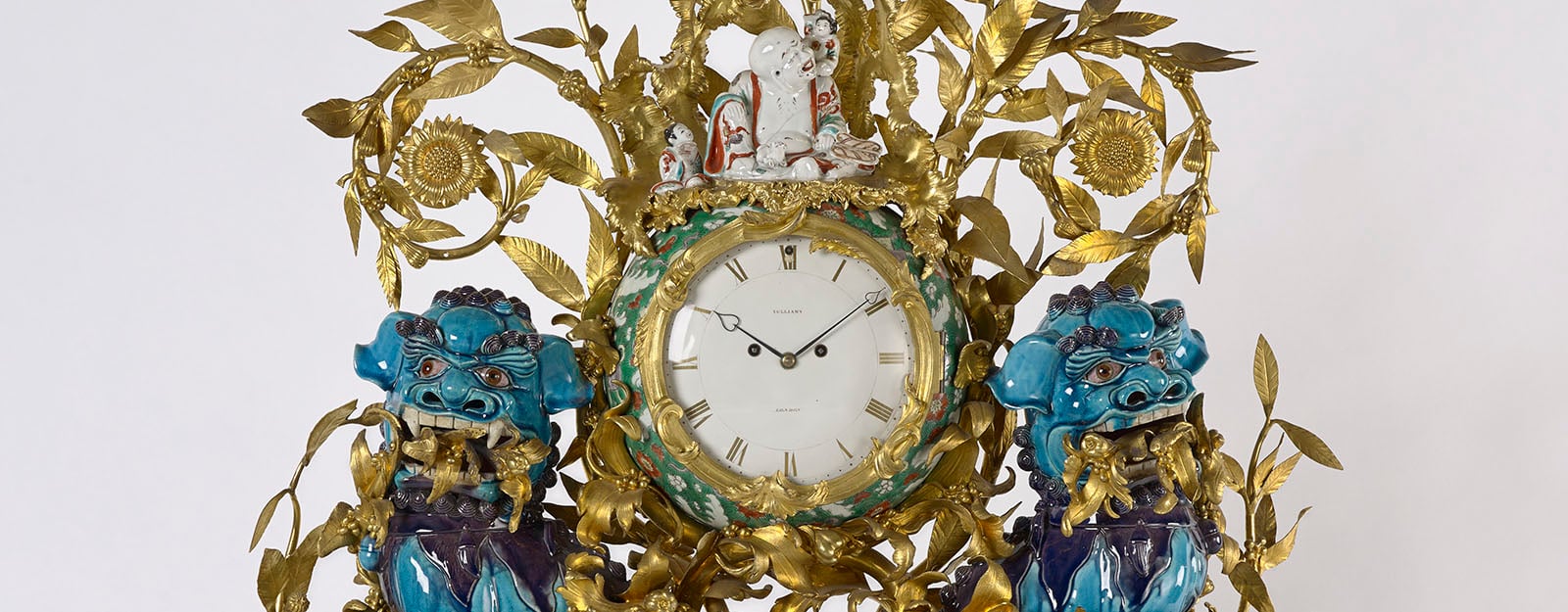
A Prince's Treasure
120 objects from the Royal Collection return to the Royal Pavilion in Brighton
Pair of bowls
mid 18th centuryPorcelain painted in famille rose enamels; gilt-bronze mounts | 44.5 x 43.2 cm (whole object) | RCIN 2355
A pair of Chinese porcelain bowls painted in famille rose enamels and gilt on an iron-red ground and mounted in French gilt-bronze. With rounded sides rising to the rim and straight foot. The outside has an iron-red enamelled ground, overpainted with gilt lotus-flower sprays and blooms, with, in reserve, four lobed oval panels, framed in gold and painted, on RCIN 2355.1 with landscapes, and on RCIN 2355.2 with figures in gardens; the interior with a light turquoise enamel glaze.
The top rim is mounted with a heavily cast, gilt-bronze band, with continuous raised and burnished U-pattern, with a pounced background divided by husk sprays, and with a bead in the centre of each arch. The foot is circled with a beaded band joining four square blocks with flowerheads, with redundant rings for suspending chains, issuing flat, pierced, tripartite framing supports above for the bowl, enclosing berried acanthus sprays, and tall, incurving legs below, chased with acanthus-leaf sprays and ending in scrolls. The shallow, tapering, fluted underside of the bowl has a lotus-leaf spray above a lobed pendant, chased with pounced leaves and berries above an acanthus-husk boss, poised over a cruciform base with central roundel, cast with a foliate spray and radiating flutes, issuing four arms with reeded panels, on four fluted square feet.
The introduction of the famille rose enamelling style in China was encouraged by the Kangxi emperor’s (1661-1722) liking for painted enamels on copper. A workshop set up within the Forbidden City made use of an imported crimson-pink enamel derived from gold, and an opaque white, which together facilitated an entire range of new soft and shaded tints. Imperial taste is reflected in the creation for the court of porcelain bowls with flowers depicted on brilliantly coloured grounds, which continued to be made in successive reigns. The use of coloured grounds combined with finely painted designs remained a feature of court wares of the Qianlong (1735-96) and later periods. Meanwhile, quantities of famille rose decorated wares were made for export to the West, including vases, figure models and table wares. Some were shaped or decorated to order with armorial and other designs.
Text adapted from Chinese and Japanese Works of Art in the Collection of Her Majesty The Queen: Volume I.







